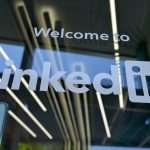COVID-19 has changed the world in many ways. But the new world is really only the tip of the iceberg. To date, the virus has affected commerce, healthcare, education, the future of work, and government all over the world, all at the same time. Some of these changes are here to stay. Today we’ll look at recruitment trends.
Some markets have been fortunate to have the resources for agility and not end up in the red. Others, not so much.
Before COVID, the recruiting industry was experiencing change with the evolution of HR technology and innovation. The global pandemic forced some of those innovations into standard practice, and now the world of recruiting has changed forever.
Recruitment trends have pivoted to a remote working world, and in this article, we are going to look at what some of these trends are and how they emerged.
COVID-19: The Catalyst For Change
Social distancing has forced companies to think about the safest — and most efficient — ways to provide goods and services to clients and customers. Global food chains have instituted new curbside pickup and delivery methods. Brick and mortar retail stores are offering curbside pick-up for products. And, even grocery stores have ramped up their order ahead/curbside pickup services.
Digital sales in fast food are breaking records. Yum!, the parent company of successful fast-food chains Taco Bell, Pizza Hut, and KFC reported an all-time high with their digital sales across the three chains, increasing from $1 billion in sales to $3.5 billion in sales over the same quarter from last year.
Not only are these safe methods of providing goods and services, but they are also convenient for the consumer, making them more likely to stay loyal to brands that have shifted to their models to accommodate buyers.
Some of these changes were brought on by an accelerated dependence on nascent technologies. Other changes couldn’t have been made without amendments made to national laws.
For example, motor vehicle sales and leasing through digital services were around before COVID, but it was not widely adopted or even legal in some cases. In Canada, car dealerships were notified by regulators that because of COVID, full online sales of automobiles would be permitted. This hadn’t been the case before.
Recruitment Trends In The Age Of COVID
Recruitment trends have pivoted to a remote working world
Human resource departments and talent acquisition teams have also been affected by the challenges of COVID-19. Social distancing practices forced companies to reconsider how often and how necessary it would be to bring employees or job candidates on-site.
In a recent and extensive survey developed by Robert Half, a leading global human resource consulting firm, 2800 senior managers were asked about hiring trends they had observed during the COVID-19 pandemic. The results give us some clear indications of key hiring trends that will continue throughout the pandemic, and quite possibly well beyond that.
Remote Hiring
The increase in remote hiring is the most significant trend to emerge and dominate hiring practices in the COVID-era.
In the Robert Half survey, 53% of senior managers reported hiring new full-time or temporary employees remotely during the pandemic. Of those managers who hired during the pandemic, 75% reported that they conducted remote interviews and onboarding sessions. This is a stark increase considering that only 12% claimed that had those remote hiring interview practices in place prior to the pandemic.
Are your remote job openings optimized for Google for Jobs?
Read up on how to post a job on Google and how to ensure they’re optimized for remote roles.

Tools For Remote Hiring
With this increase in remote hiring, there is a need for HR professionals to clearly communicate with and evaluate job applicants. Video communication has become a strategic tool for hiring teams during the pandemic.
On-demand video interviews are a means of communication that hiring managers are using to help facilitate a faster and more efficient screening process.
In a survey conducted by Checkster, 400 hiring managers were asked which tools they rely on for remote hiring practices. Sixty two percent of hiring managers said they use video interviewing during the remote hiring process, the only 2nd to phone interviews at 69%.
Online assessment testing was implemented by 53% of the hiring managers, and 37% acknowledged that new post-COVID recruitment practices improved their turnaround time for onboarding.
Remote recruitment tools were seeing interest and use prior to COVID, but the pandemic has been the catalyst for hiring managers to adopt new hiring practices they may not have otherwise.
Workstream, a San Francisco based-startup, is using AI-powered tools to help gig-economy and hourly workers find jobs fast. The automated hiring tool is being used by almost 5,000 hiring managers to fill positions quickly and have staff lined up for when social distancing precautions have subsided.
The platform is text-based, so job seekers will get notifications from chatbots on their phones when the platform has matched them with a potential role. Expediency and efficiency in hiring are needed even more in the post-COVID era.
Onboarding has become almost entirely remote for companies during the pandemic. It’s critical that clear communication and inclusion in company culture are being maintained during the pandemic. New employees who experience a structured onboarding program are 58% more likely to remain with the organization than those who didn’t receive structured onboarding.
Hiring managers have needed to become more agile and innovative with virtual onboarding practices during COVID. Forbes recently compiled fifteen factors and suggested strategies that hiring managers should consider for virtual onboarding procedures during the pandemic. Rick Hammell of Elements Global services highlights that onboarding needs to not overwhelm new hires, and create a welcoming virtual environment.
“Employee onboarding is more than some starter pack and company swag. It’s a crash course in the company culture, and that’s scary. We try to ease the introduction by scheduling new joiners to start together, so no one is isolated and they forge a bond. This is so important while many work remotely right now. Virtual huddles create an environment of inclusivity, regardless of the employees’ location.”
– Rick Hammell, Elements Global Services
During these times where it’s easy for employees to feel isolated, businesses can put virtual onboarding procedures into place that instill gratitude and confidence in each new hire.
Recruitment Trends Are Expanding The Candidate Search
Of the recent recruitment trends, one is particularly interesting, especially when you think about it with a historical view. It used to be that — at least for the most part — companies hire for their business in the areas immediately surrounding their offices. This makes sense — workers needed to be within commuting distance to the office.
Companies are not limited to hiring from the workforce in their geographic location anymore. With more and more employees working from home, the pool of job candidates to hire can drastically increase.
Sixty percent of the hiring managers from the Robert Half survey said that they had expanded their search geographically to access a wider candidate pool, whereas only 16% said they had done this prior to the COVID pandemic.
“The rise of remote work has provided employers an opportunity to access a much deeper candidate pool.” – Paul McDonald, senior executive director, Robert Half
It is great that organizations have realized that by expanding their geographic filter, they can reach a more fruitful talent pool. However, even with this newly expanded reach, it doesn’t guarantee ideal candidates have visibility to the job posts. If the job data is not correctly aligned with Google for Jobs’ schema requirements, the online posts will not benefit from maximum visibility and exposure.
Recruiting For The Best Results During COVID, and Post-COVID
Recruiting trends we’re experiencing during the time of COVID may not last long into the future — only time will tell. But, as the world turns to more digital communications and digital business, chances are we are only seeing the beginning of an age of recruiting innovation and technological developments.
It is paramount that companies expanding their geographical reach for talent have well-optimized online job posts. Successful recruitment and online job visibility start with job data being correctly aligned with Google for Jobs. In the wake of COVID-19, Google for Jobs altered their structured data options to offer a field for telecommuting/remote work. Employers should take note of the remote work indicators and adjust accordingly.
As 73% of jobseekers start on Google, a business that is optimized to hire with Google and use the power of the world’s most dominant search platform will see the best results. If you’re interested in improving your candidate pool and expanding your recruiting reach, please contact us. Learn how Google for Jobs can help create online job visibility for your business.





